There’s preparation. There’s equipment. There’s planning. However, if I’ve learnt one thing from years of hunting, then it’s that LUCK is probably the biggest deciding factor in the success of any hunt. You can get fitter than a buck in the rut, hit a chipmunk in the eye at 300 meters, and carry only the finest sturdiest equipment money can buy, but if the weather turns and you can’t see more than 20 yards…you’re just shit outta luck J
On this hunt I had less than 48 hours and it all boiled down to that very important element…..
Location of hunt: near Zermatt, Canton of Valais in the Swiss bordering Italy
Altitude of hunt: 2300-2700 meters above sea level
Species hunted: Alpine Ibex-Capra Ibex
Firearm: Blaser Single Shot 7mm Remington Magnum
We had barely got to the hotel in the little village of Herbriggen when the regional game-ranger Bruno called and asked if we’d arrived safely and if we would consider going out today, as in the next hour or two? The ibex had been conspicuous by their absence for a week prior to our arrival, and considering the change in weather and the approaching fog, it would be crucial for us to get into the mountains ASAP! Bruno and his fellow game guides had spotted ibex on a rather accessible lower slope that very morning! Considering this region has in excess of 25 peaks that hit the +4000 meter mark, the term “lower” is relative!
Fast forward two hours and I was closing in on a dispersed group of Ibex, consisting of three older billies further up the slope, a group of six younger billies with my older one among them and some rather alert nannies and kids a few hundred meters above them. Coming from sea-level just 24 hours earlier made the first ten minutes of the hunt rather interesting and being light headed due to the altitude meant we had to take extra precaution with every step we took on the loose shale.I was to hunt a very specific Ibex, one that the game guides had been watching for weeks prior to my arrival, but let me digress for a moment. ….
Ibex hunting in Switzerland is VERY regulated. The modern history of this animal is an absolute success story. The belief that this mystical beast had healing powers, made it so sought after that trade in its various body parts almost led to its complete extinction by the mid1800’s. Were it not for King Victor Emanuel II of Italy ( an avid hunter), who had the foresight to create a protected area for the last remaining Ibex, in what is now known as the Gran Paradiso National Park in Italy this creature would have been gone forever. Back in the day, Italian poachers, spurred on by Swiss hunters and businessmen (and their Swiss Francs) were hired to steal young Ibex from Italy and smuggle them across the border. A breeding program was started to reintroduce Ibex into the Swiss Alps. Today’s population is derived from this “stolen stock”. Back then this was quite risky business, considering that stealing or poaching Ibex under the Kings rule was punishable by death!
Several hundred years later, the present day “Schweiz”, as Switzerland is known, has the largest population of Alpine Ibex in Europe, numbering close to +/-17’000 animals. Herds are meticulously managed. Game-rangers in various “Kantons” ( provinces) across this mountainous country study their Ibex herds throughout the year, carefully planning which particular animal or what number are to be removed from a herd in order to create ideal conditions that benefit both the ibex populations and the fragile alpine eco-system in which they live. Lead animals, that have kept the group intact and passed their wisdom onto younger animals are always spared, as it is important that strong genes and the knowledge and whereabouts of old game trails and winter browsing grounds are passed on to younger generations to keep the herds going throughout the colder months in these high altitudes. Sick or very old animals are part of the cull program, and my particular ram was showing signs of weakness….more about that later.
I had a great vantage point, and a thundering mountain stream concealed any noise from the bedded Ibex that were in a shallow gully in front of us. Bruno carefully explained that my animal was darkest one in the group of six billes and clearly the largest horned. As he came to his feet and followed the retreat to higher ground, I could tell that he was not as strong on his feet as the others. My shot was only 127 meters, and although well placed, the Ibex ran another 50-60 meters, before coming to a halt in front of a boulder, where I could anchor him with a second shot.
I had fulfilled a dream: to hunt an Ibex, in its natural environment. It was an added bonus to be part of a game management program which the Swiss had turned into a science. An autopsy in the skinning room later revealed that my Ibex had a lung infection, unfortunately more common these days as the winters become increasingly humid, a result of global warming. My billy was 8 1/2 years old, judging by the growth rings on his horns, and when I later cleaned and boiled the skull I noticed a healed abscess in his mandible which left a rather large protrusion. This was undoubtedly going to be his last winter.
Not only the Ibex have reached healthy populations across their alpine range, but in recent years, in fact in the very area I hunted, lynx, wolves and even brown bear are making come back too!
Yodelayheehoo to that!
( Thanks to Bruno, Klaus and Alois for the great hunt and Julia for all the taking such great footage!)
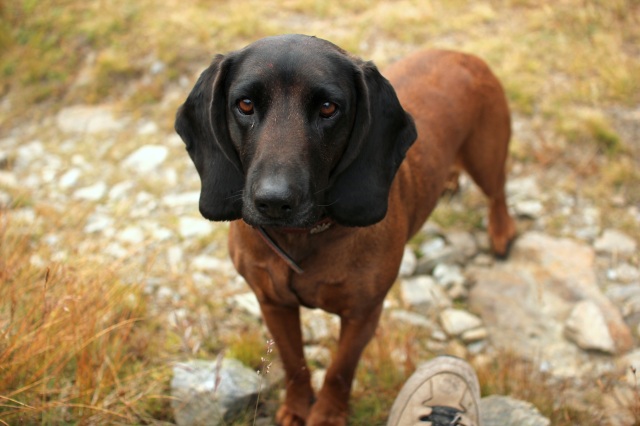
Popular among all German speaking hunters, the Bayerischer Gebirgsschweiss Hund. This is 7 year old Luna, a good looking girl.

Pan fried Ibex back-straps. They tasted great…surprisingly with no goat/mutton like after taste, or very little gamey taste at all.
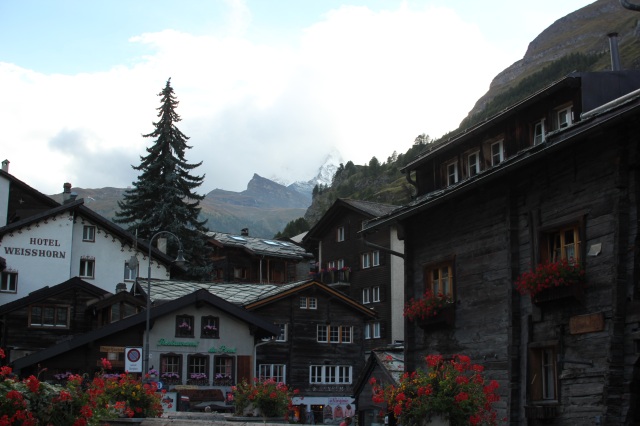
Zermatt, and if you look hard, to the right of the big pine, you will see one of Switzerland’s most famous mountains, the Matterhorn. I got to see it for a whole 5 seconds, then the mist swallowed it up again.

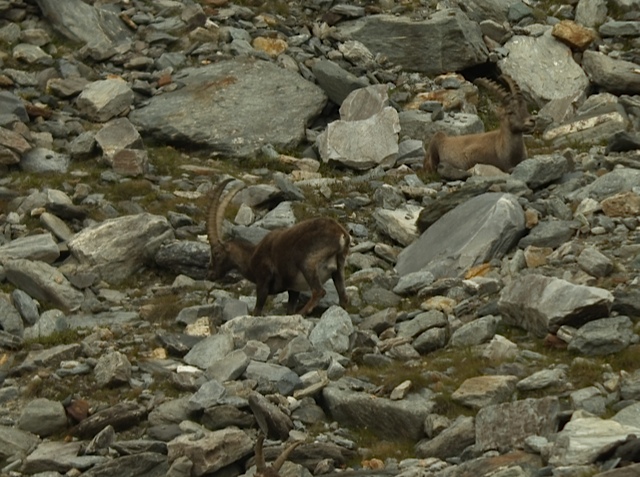
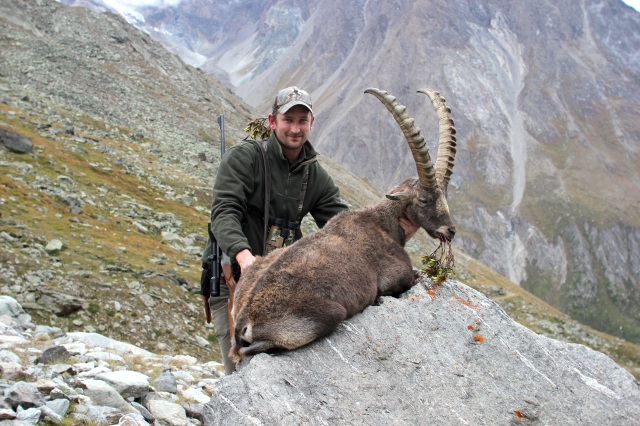
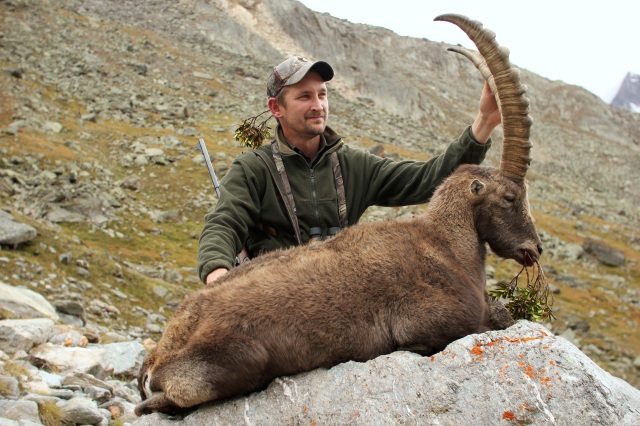
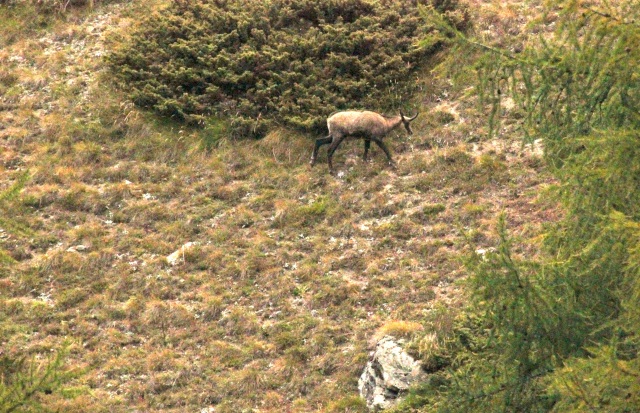
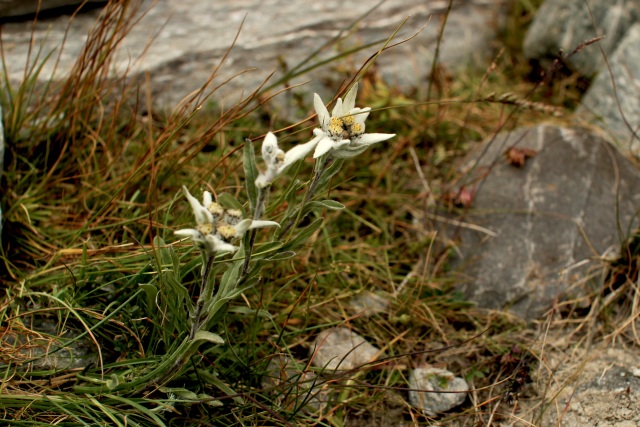
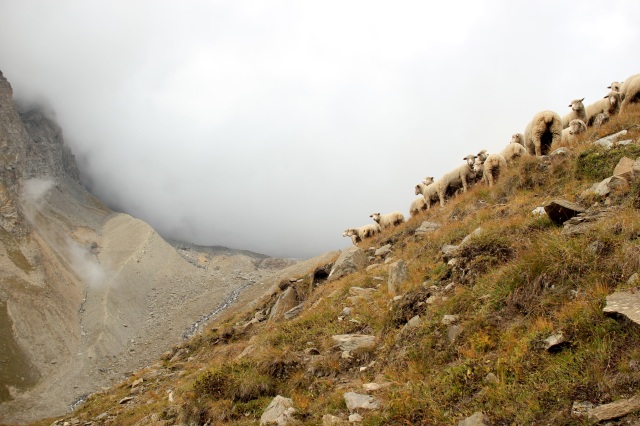
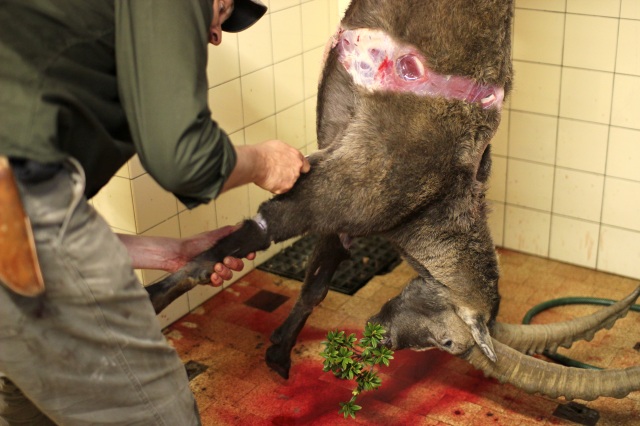
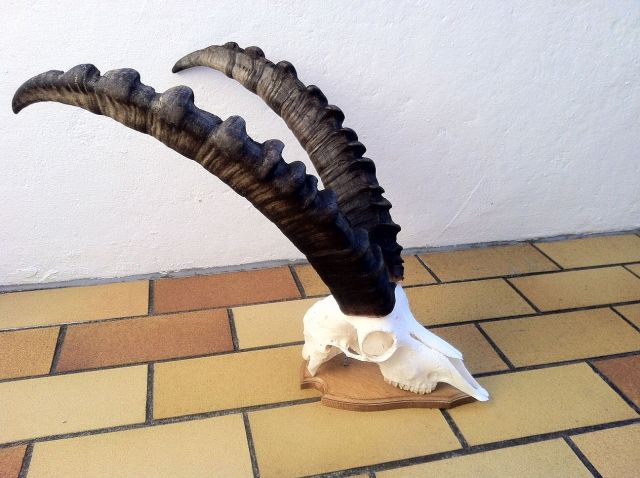
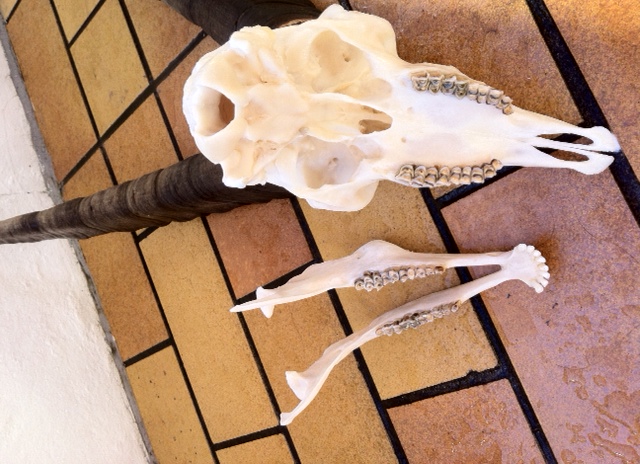
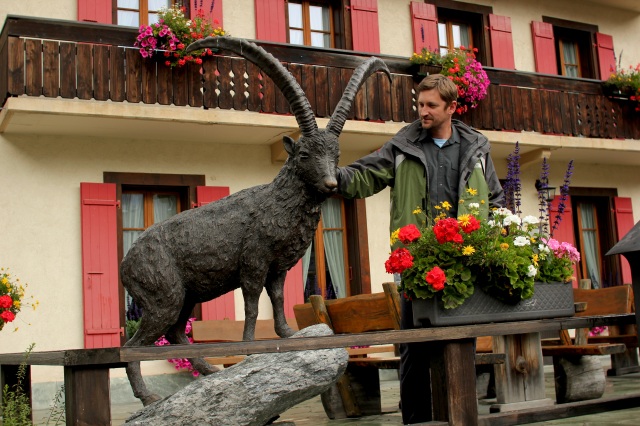
Beautiful write up man. You couldn’t be any more right with the luck factor. Well done.
The usual quality report we’ve come to expect from the Master Hunter, taxidermist and gourmet! First sighting to Frying pan – is that a book title yet?
Well done Phil and Julia!
What an amazing animal. The video footage was excellent, as well. I loved the background music! Gut geschafft!
Thanks guys! It really was a great experience.